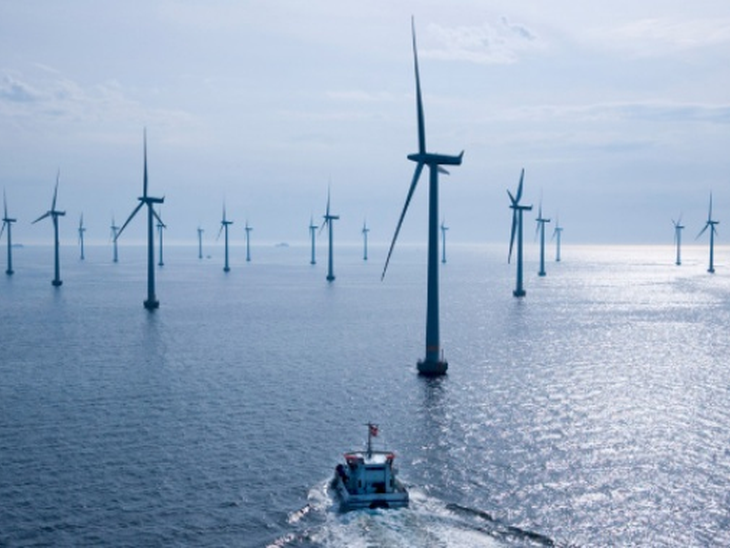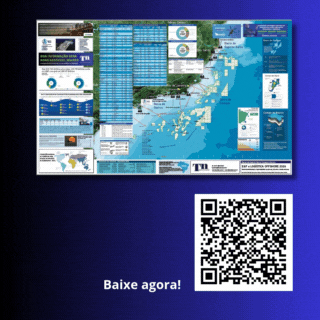Brazil has 700 GW offshore wind energy technical potential, says EPE
T&B Petroleum/Agência Brasil
27/01/2020 17:05

According to a study by the Energy Research Company (EPE), linked to the Ministry of Mines and Energy, the technical potential for generating wind energy in Brazil at sea is 700 GW. The document was prepared after six environmental licensing processes for the construction of offshore wind farms (offshore wind farms) were opened at the Brazilian Institute of the Environment and Renewable Natural Resources (Ibama), all of which are in the preliminary licensing phase.
According to the president of EPE, Thiago Barral, the Roadmap Wind Offshore Brazil study, published yesterday (23), is the "most complete document, from a planning point of view", about this source of energy produced at sea made in Brazil.
According to Barral, EPE realized that there were information gaps about offshore wind farms and barriers for this energy source to present itself in a competitive way in Brazil. The map is based on experiences abroad, especially in Germany, the United Kingdom and China and points out where the barriers and possible lines of action are to remove these difficulties. "An X-ray of where we are and where we can go," said Barral. The next step will be to identify public and private investors who can develop these actions.
Potential
The EPE study found that the farther and deeper, the greater the technical potential for generating wind energy at sea and the greater the associated cost. Although some countries are exploring wind energy at greater depths, the map indicates that the trend is for a depth of 50 meters. In these locations, the technical potential is 700 GW.
The main location for the installation of wind farms at sea in Brazil is the Northeast, with 68% of potential for harnessing the winds at sea. The South Region also has positive potential, as well as the Southeast, said Barral.
Of the six projects with a request for prior licensing at Ibama, three show potential for generating 3 GW each. They are the Jangadas Maritime Wind Complex, in Ceará; the Maravilha Wind Complex, in Rio de Janeiro; and the Águas Claras Maritime Wind Complex, in Rio Grande do Sul, all owned by Neoenergia.
Renewable sources
Barral explained that, as in Europe, interest in wind energy at sea is related to the search for renewable sources to replace fossil fuels, in addition to the production chain and the growing demand for energy. "The search for sources that do not aggravate pollution problems," he said.
According to the president of EPE, the costs for installing wind farms at sea are higher. Involving distance, depth and type of foundation, among other factors, abroad, these costs vary between US $ 2 thousand and US $ 6 thousand per kilowatt (kw). In national currency, the investment varies between R $ 8.7 thousand and R $ 15.8 thousand per kw, based on the international benchmark. On land, the cost of setting up a wind farm is R $ 4,000 per kw. The installed capacity of onshore wind farms today is 15 GW, informed the president of EPE.
Problems
Barral explained that a factor that raises the cost is the connection with the system on the coast and its integration with the interconnected system. Other problems involve the adaptation of the national industry to serve offshore wind in terms of scale, that is, the largest dimension for the equipment currently used in onshore plants, the infrastructure of ports and vessels to meet the demand of offshore wind, a matter that could involve the Navy.
The president of EPE saw as positive the opening of public consultation by Ibama on the environmental licensing for these plants, in view of the unprecedented nature of this type of investment in Brazil. He assessed that the fact that they are at sea, at first, does not bring up any issue that cannot be overcome, but admitted that, as these are coastal areas that are more populous, there may be conflicts with other areas, such as tourism, but that must be overcome.
Legal certainty
For Barral, the ideal is for wind farms at sea to integrate with the mechanisms applied to other energy sources. Regarding the regulatory framework to provide legal certainty for the development of offshore projects, he indicated the need to work to improve the legislation. The model must favor free enterprise.
Due to the logistical complex, the construction time of these wind farms at sea can extend from two to three and a half years, based on international experience. Onshore (onshore) wind farms, the completion period is one year. Barral emphasized that the intention of the study is to start the discussion on the topic. "The idea is to make a contribution, showing that it is feasible, despite the complexity". He believes that wind farms at sea are "a possibility that could arise in a not too distant horizon".
The work had a partnership with the Navy, Ibama and the National Electric Energy Agency (Aneel), and was supported by the World Bank (Bird), the German cooperation agency and the British Embassy.



